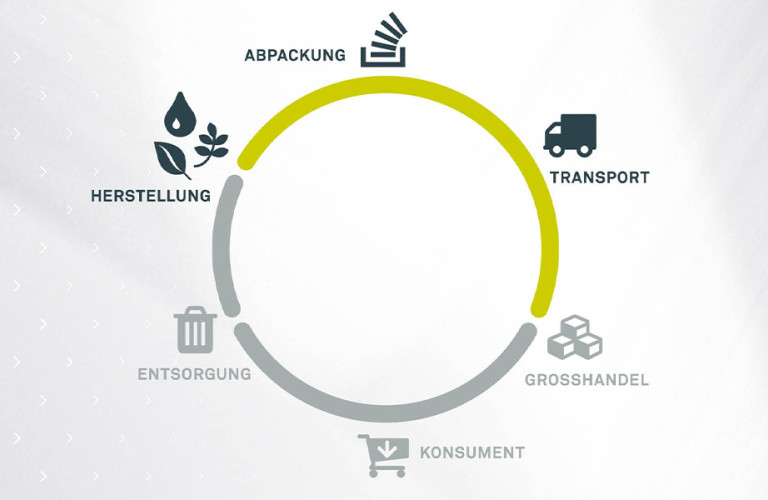Plastic packaging never enjoyed a good reputation in the eyes of the public. In recent years, media coverage on marine littering and a lack of recyclability only added fuel to that discussion.
Public perception is one thing, informed discourse another. Experts have yet to clearly define the parameters by which the recyclability of flexible packaging is to be determined. Furthermore, when it comes to resource efficiency and their carbon footprint, packaging films come off much better than is widely claimed. Especially when compared to other packaging materials.
Given their highly efficient protective properties, plastic compounds used for food packaging can hardly be replaced by recyclable mono material solutions.
It takes a 1,200 µm monofilm to replace a 70 µm thin composite film to achieve the same oxygen barrier. This translates into material costs 20 times that of composite film.
What can be said with certainty is that plastic films for food are already contributing to sustainability today. In a way, the most relevant substrates, polyethylene and polypropylene, are “waste products” that develop from separations as a result of the crude oil refinery process. Utilising this resource can therefore be considered an instance of reusing or recycling. The efficiency of waste-to-energy treatment of packaging materials presents another significant factor, as it serves to reduce the use of fossil fuels. Overall, the packaging’s life cycle has to be viewed in its entirety. In doing so, the would-be environmental advantages of materials such as glass, cardboard and tin are put into perspective.
Which are the relevant factors in terms of crude oil consumption? In Germany, the entire packaging industry accounts for as little as 1.5 percent of its total use. In contrast, transportation alone takes up about 32 percent. This illustrates that reductions in the packaging industry cannot contribute to reducing overall crude oil consumption in any significant way.
When comparing different types of packaging directly, plastic does not fare too badly. Considering that food loss (mainly through waste) is one of the most significant causes of emissions every year, the percentage of packaging becomes a critical factor. The WHO determined that food loss causes 4.4 gigatonnes of greenhouse gas emissions per year!
The society for packaging market research (GVM) has determined what would happen if there was no more plastic packaging. They posited that film packaging, plastic cups, foam packaging etc. would be replaced by alternatives made of paper, cardboard, carton, glass, tin, steel, aluminium or wood. The result: packaging weight would be four times as high, energy consumption for its production would increase by factor 1.5. Manufacturing costs would double. (Source: PlasticsEurope, Bestens schützen mit immer weniger Materialeinsatz, also: Plastics – the facts 2017).
Furthermore, the packaged product itself often has a significantly higher carbon footprint than its packaging. For instance: According to an IK-study, producing one kilogram of beef causes 13 kilograms of CO2-emissions. Its packaging only causes 200 grams. In addition, the film only makes up a fraction of the entire packaging. The potential for improvements in terms of packaging weight has largely been exhausted. Moreover, packaging only contributes one percent to Germany’s carbon footprint.
The examples stated above illustrate that sophisticated plastic composites are an integral part of sustainable packaging concepts. Regardless, it remains a vital and right endeavor for us, the packaging industry, to evolve and to come up with new solutions to meet future requirements. In this way, plastic can increasingly be part of the solution and less part of the problem for our society.



 Back to Newsroom
Back to Newsroom